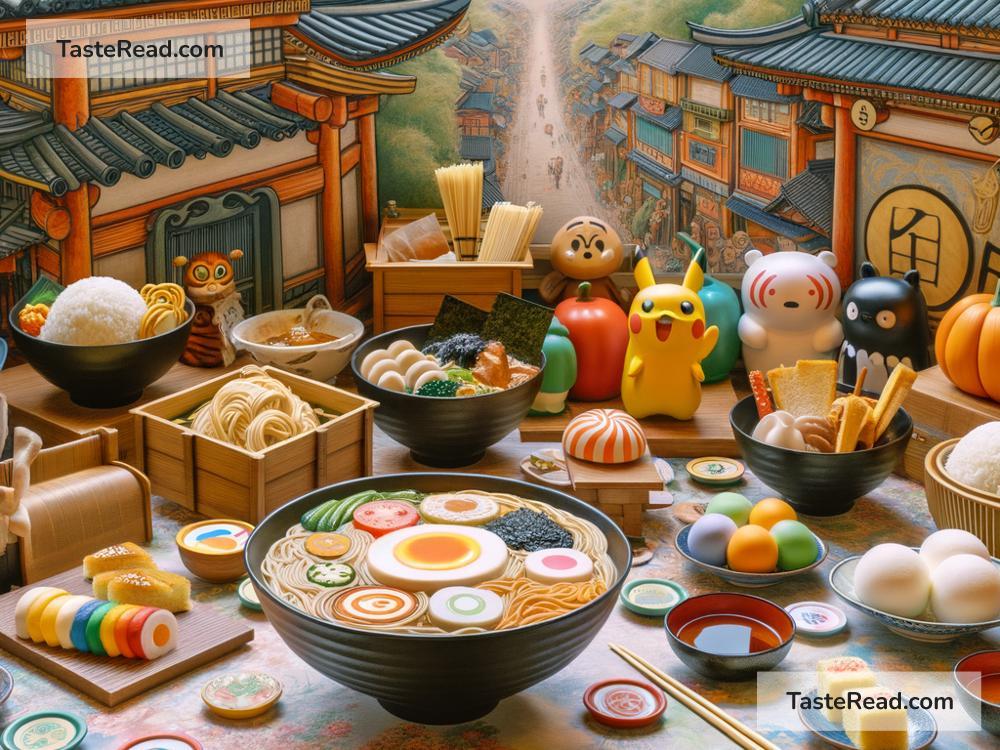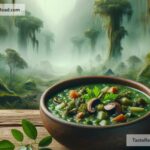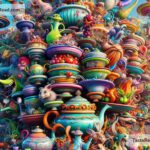The Hidden Symbolism of Food in Studio Ghibli Films
Studio Ghibli films are loved worldwide for their beautiful animation, heartwarming stories, and unforgettable characters. But there’s something else that stands out in these movies: food. Whether it’s steaming bowls of ramen, fluffy cakes, or freshly made rice balls, food is everywhere in Studio Ghibli films. It’s not just there to look delicious—it often carries deep symbolic meanings. Let’s explore how food serves a purpose beyond nourishment and plays an important role in these beloved movies.
Food as a Symbol of Love and Care
In many Studio Ghibli films, food represents love, care, and family. It’s often used as a way to show characters taking care of one another. For example, in My Neighbor Totoro, there’s a scene where the two sisters, Satsuki and Mei, bring lunch to their father as he works. The simple act of preparing and sharing food shows their strong family bond.
In Spirited Away, Chihiro’s parents greedily eat food meant for spirits, which leads to them turning into pigs. But for Chihiro, food becomes a lifeline. When Haku gives her a rice ball to help her recover her strength, it’s not just food; it’s an act of kindness and protection. Through this small gesture, Haku shows he cares for Chihiro, setting the stage for a friendship that helps her survive the challenges ahead.
These moments remind us that food goes beyond physical sustenance—it’s also a way to express love, care, and connection with others.
Food as a Bridge Between Worlds
In Studio Ghibli films, food often acts as a bridge between different worlds. It’s a way for characters to connect, even when they come from entirely different backgrounds.
Take Spirited Away, for example. When Chihiro works in the spirit bathhouse, she encounters all sorts of creatures from another realm. Despite their differences, food often brings these characters together. No-Face, a mysterious spirit, first wins Chihiro’s attention with offerings of gold and food. While his intentions become more complex later on, the shared act of eating symbolizes an attempt at connection.
Similarly, in Howl’s Moving Castle, food helps build relationships between the main characters. When Sophie cooks breakfast for Howl, Calcifer, and the others, it’s not just a meal—it’s a moment that brings them closer. The act of cooking and sharing food becomes a way for Sophie to bond with her new “family,” even as she navigates her strange and magical adventure.
Food as a Marker of Everyday Life
One of the reasons Studio Ghibli films feel so comforting is because they celebrate the beauty of everyday life. Food plays a big role in creating this sense of familiarity and warmth.
From the bento boxes in Kiki’s Delivery Service to the tea and cake shared in The Wind Rises, food in Ghibli movies makes the world feel real and relatable. These moments are often quiet and peaceful, reminding viewers to appreciate small joys in life.
For instance, in Ponyo, food takes on a nostalgic and grounding presence. When Sosuke and his mother make ramen for Ponyo, the simplicity of the meal contrasts with the magical and chaotic events happening around them. It’s a reminder that even in extraordinary circumstances, the basic act of sharing a meal can bring a sense of calm and normalcy.
Food as a Symbol of Growth and Transformation
In many Studio Ghibli films, food also represents transformation and personal growth. When characters eat, it often marks a turning point in their journey.
In Spirited Away, Chihiro’s first meal in the spirit world—the rice ball given by Haku—helps her gather the courage to face the challenges ahead. It’s almost as if the food gives her emotional strength.
In Princess Mononoke, food becomes a symbol of understanding and reconciliation. When Ashitaka shares food with San, it’s a small yet meaningful gesture that signals his desire to bridge the gap between humans and nature. It’s not just about the food itself; it’s about what the act of sharing represents—a willingness to open up and find peace.
The Realism Behind the Food
One of the reasons food in Studio Ghibli movies feels so impactful is because of how realistically it’s portrayed. Artists painstakingly animate every detail, from the steam rising off freshly cooked rice to the glossy texture of ramen noodles. You can almost smell and taste the dishes on screen!
This attention to detail not only makes the food look mouthwatering but also highlights its importance in the story. The care and effort put into animating food reflect its deeper meaning in the characters’ lives.
A Universal Language
Food in Studio Ghibli films is a universal language. No matter where you’re from or what your culture is, everyone can relate to the comfort of a warm meal or the joy of sharing food with loved ones. Through food, Ghibli films remind us of our shared humanity.
So the next time you watch a Studio Ghibli movie, pay close attention to the food scenes. They’re not just visually appealing; they hold rich symbolism that deepens the story. Whether it’s love, connection, growth, or simply a celebration of life’s little pleasures, food in Ghibli films is much more than meets the eye.
Perhaps this is why these movies stay with us long after the credits roll—they not only feed our imagination but also nourish our hearts.


